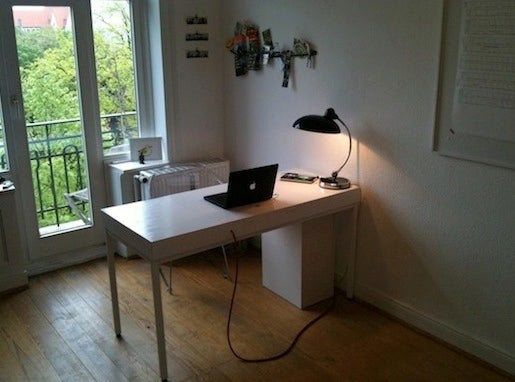
Recommendations regarding workspace optimization are many. Yet, how many of those recommendations can be deemed both practical and implementable in the short term? This post in concerned with presenting an exhaustive list of implementable workspace solutions for established freelancers and all those who know the struggle of writing long hours in front of a computer screen. Workspace organization becomes a real trouble for those working from home, as it’s naturally so hard to stay concentrated and productive in a cozy home environment.
All workspace improvement recommendations revolve around 5 central themes:
- Semiotics or your overall feel from working at your spot
- Desk set up
- Ergonomics or how your body feels
- Lighting and color
- Zone-specific work and thought processes
1. Semiotics
Every writer knows what semiotics is. It is the in-between-the-lines feel that your work produces on the reader. Why this matters here is because in academic literature a distinction is made between home self and work self. The two selves are said to overpower and so-to-say combat one another in a continuous cycle as the individual becomes more settled at work. Certain personal items start appearing on the employee’s desk as they become more settled, transferring their home self into their work environment and vice versa.
So, in a way, things on your desk extend your personality. The home self versus work self dualism that arises from working in an office does not exist for freelancers in the same way it does for office workers. Yet, freelancers still extend their personalities by having personal items on and around their desk. Workspace semiotics remains an important topic for freelancers for that exact same reason. The overall feel of the workdesk is to be worked with regardless of whether you work in an office or from home. Try to analyze how your desk makes you feel and research what impact it produces on your work.
2. Desk
Things like pin boards, drawers, stickers, etc., are all undoubtedly great. Some adore these little tools, while some prefer computer apps for staying organized and productive. There can be no set recipe for that. In fact, even an Xbox controller can be a vital part of workspace set up. No, really! Writer J.W. Alden always has it on his work desk as a reminder that there will be rewards after work is done.
There is however an exception to the no-set-recipe rule. Two studies from 2011 and from 2015 have proven that having a plant on your desk increases cognitive attention.
3. Ergonomics
Cramped up fingers, swollen feet, back pain are all resulting elements from incorrect posture and inconvenient workspace elements. Proper workspace ergonomics protect us from that. It should always be up to you which keyboard, which mouse and which chair to use.
Furthermore, according to a study by a health scientist Nicolaas P. Pronk, standing while working influences our health as well as our productivity. No matter how comfortable you feel, there is always a need to stand up and stretch.
4. Lighting and Color
Would you go as far as painting your walls into a different color if you knew it would help with productivity? Surely not right away. Such changes would be too structural and resource-demanding. It is a matter of simple cost effectiveness, whereby such changes as painting walls and buying specialized equipment require signficanly more effort than the amount of potential good they carry.
Still, want it or not, there is a huge impact color is playing on you while you work. There is a whole theory around colors termed color theory. It is always used in political campaign marketing. The reason it works in political marketing and advertising at large is because the effect of every color influences people universally despite their different color preferences. Although it is hard to change wall color, there are other ways to work with color gamma in and around your workspace. Tapestries, interior elements, figurines, etc.
If it’s hard changing the color gamma around your workspace, try changing the lighting. Studies prove a positive effect of natural light when it comes to productivity. Color temperatures of 3500-4000K are most preferred, as they stimulate thinking processes and, as a result, productivity.
5. Zone-Specific Work
In a perfect world, every workspace would be divided into two zones:
- A computer corner
- A non-computer corner
The latter should be reserved for relaxation, non-computer work and gaining inspiration. This zone is ideally a place for cozy sofas, favorite books, work-related reading, etc. If you haven’t got one already, set one up ASAP. I won’t go any further explaining how to do that, as interior design should be a personal thing.
Whatever Works For You
2013 Workplace Survey from Gensler found out that employees perform better when they can control their workspace environments. Make sure you actively control yours too. It is so easy to be passive about how exactly you do work when you work from home and everything is possible.